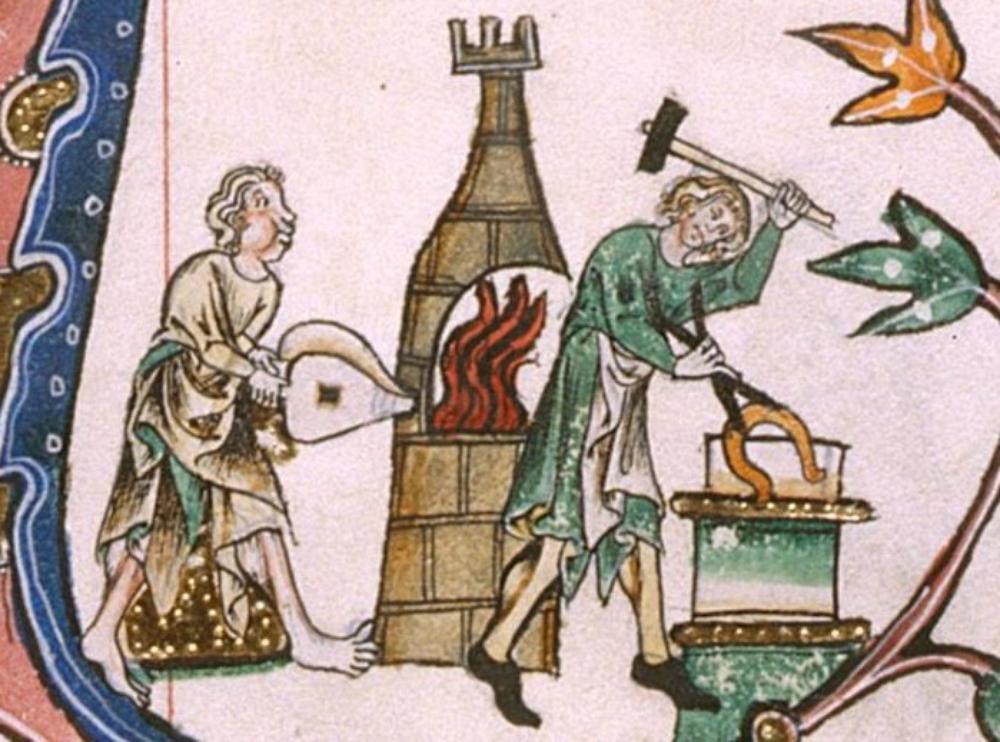
Medieval Occupations and Jobs Blacksmith. History of Blacksmiths
From the sturdy armour to the deadly sword and hammer, these blacksmiths played a crucial role in shaping the outcome of battles during the Middle Ages. Crafting Armor in the Middle Ages: Techniques and Methods. Medieval blacksmiths in the Middle Ages played a crucial role in the production of weaponry such as swords and hammers, as well as.

Historic Blacksmith at a Middle Ages Market Editorial Photo Image of fire, 26163721
The Role of the Blacksmith in the Middle Ages The function and influence of blacksmiths in the Middle Ages extended far beyond simple metalwork; they were, in fact, instrumental in shaping the economic landscape of this period.

Pin by GC on Blacksmiths Painting, Blacksmithing, Medieval art
Blacksmithing was an essential trade during the Middle Ages, providing tools, weapons, and household objects to the community. In order to create these items, blacksmiths employed a variety of techniques using different tools and materials. Forging The forging process was the cornerstone of blacksmithing in the Middle Ages.
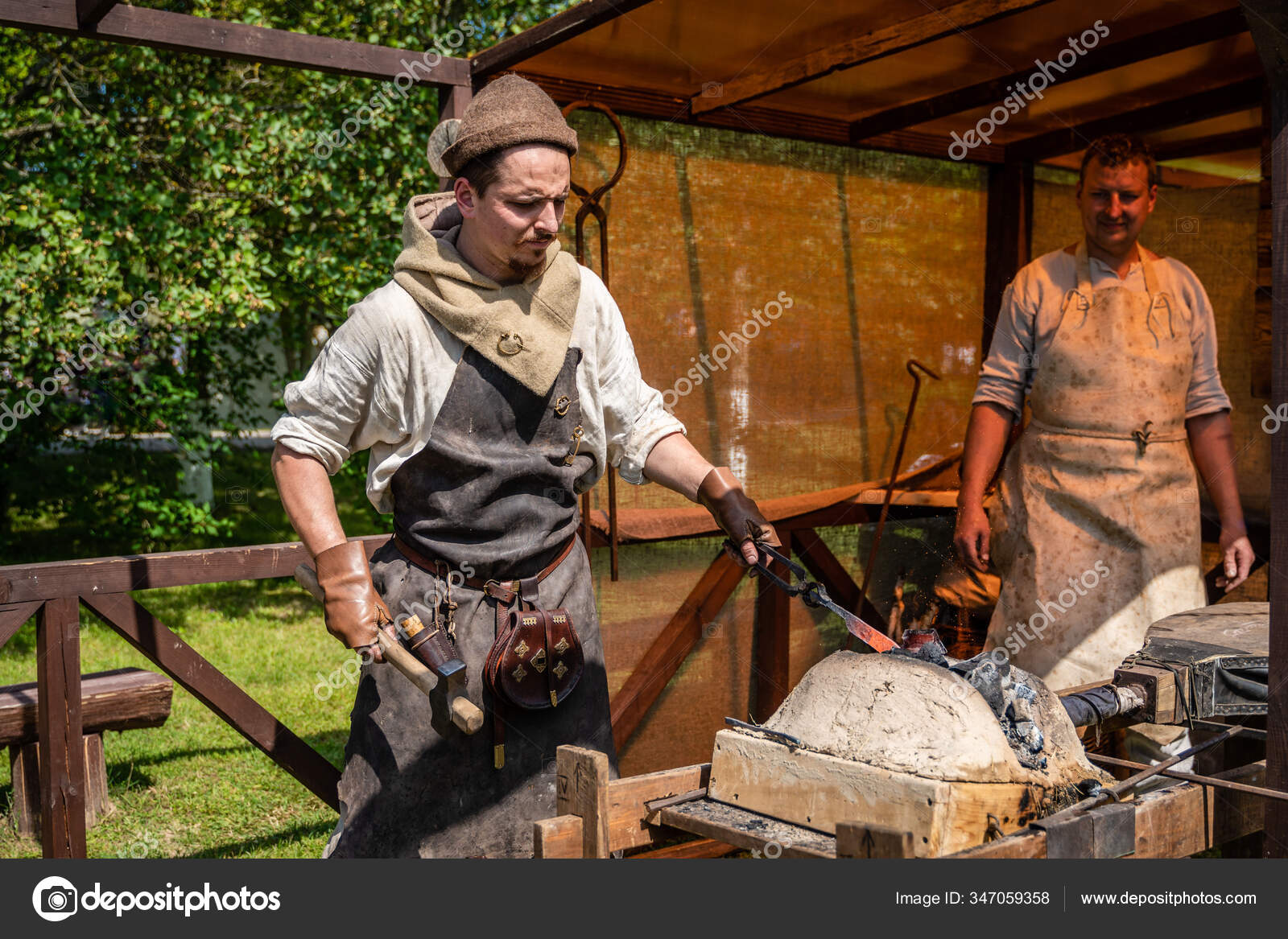
Medieval Blacksmith
75 of the top 100 retailers can be found on eBay
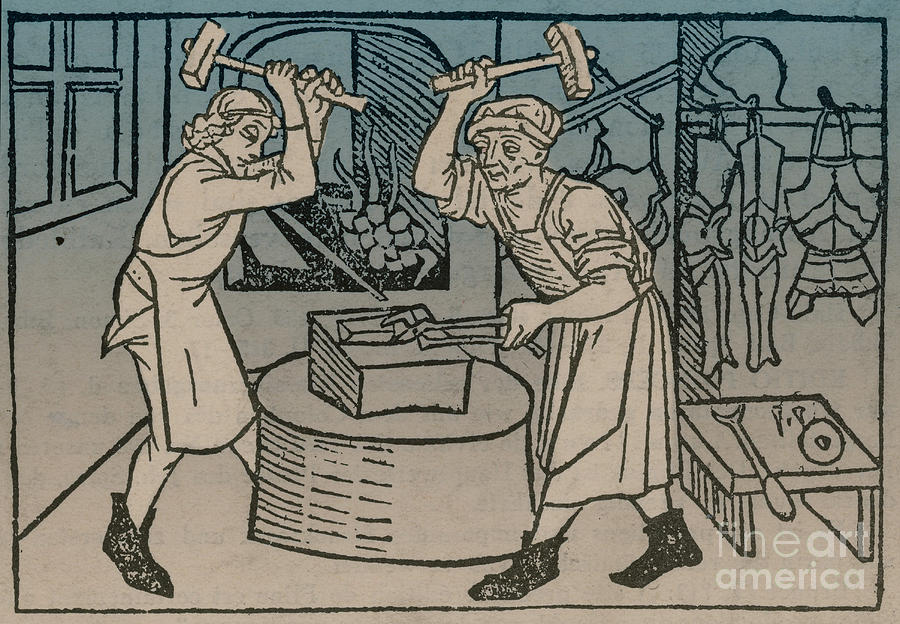
Blacksmiths, Medieval Tradesmen Photograph by Science Source
Blacksmithing has a rich history that dates back to ancient times. It has played a crucial role in shaping civilizations and societies throughout the ages. The work of a blacksmith involves using various tools and techniques to heat, forge, shape, and manipulate metal. The color of the metal during the forging process is an important indicator.
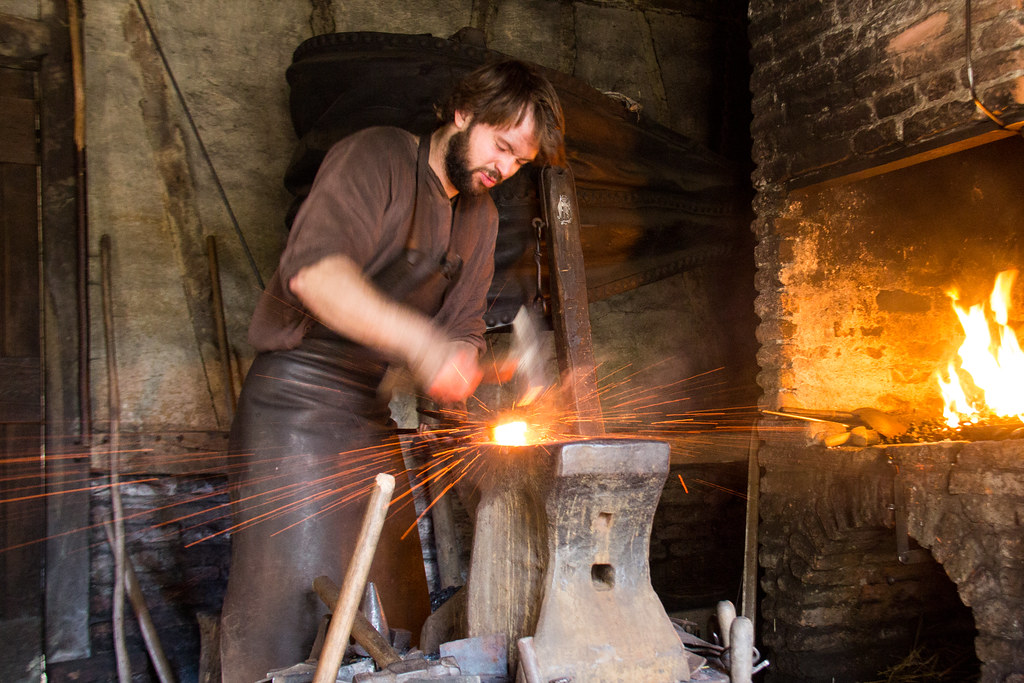
medieval blacksmith Hans Splinter Flickr
Clothing of the Medieval Peasant Class The main clothing pieces worn by blacksmiths and other workers during the middle ages did not change much from the 8th to the 14th centuries.

Medieval Blacksmith Daily Life (Guilds, Work & Training) Working the Flame
During the Middle Ages (500-1500 CE), blacksmiths played a vital role in European society, as they were responsible for producing a wide range of goods, from weapons and armor for soldiers to tools and horseshoes for farmers. They also became skilled artisans, creating intricate works of art such as decorative iron gates, chandeliers.
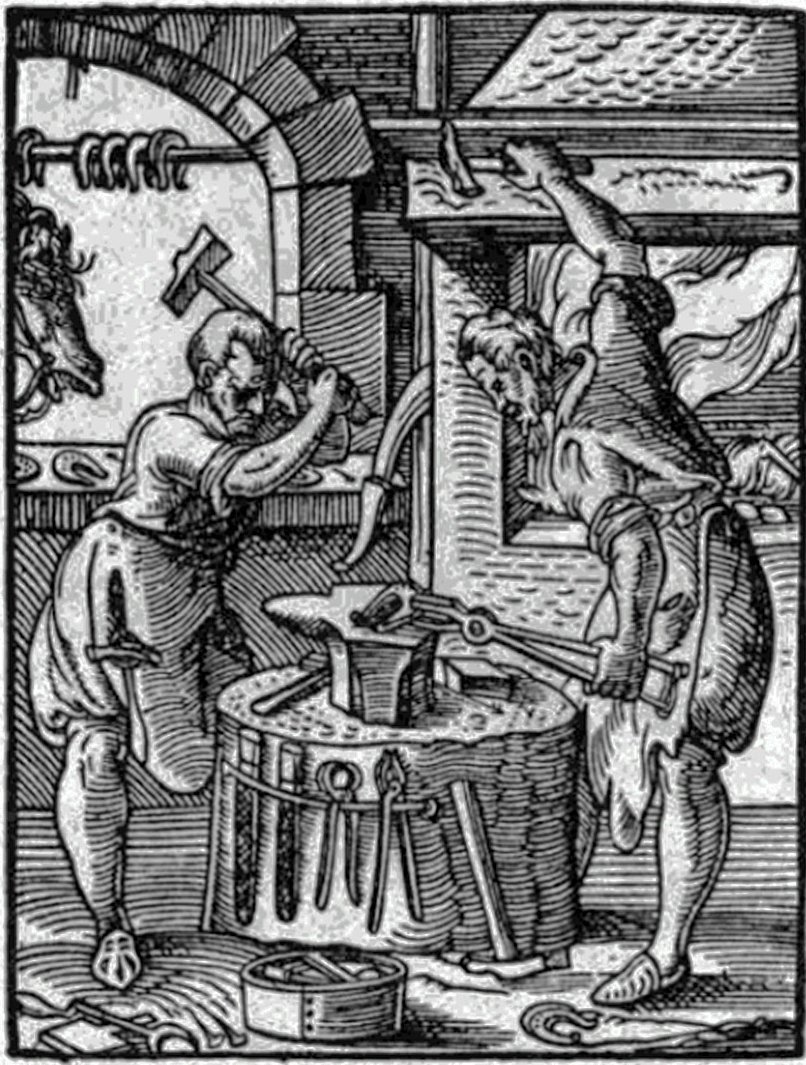
Medieval Blacksmith
Items made by the Medieval Blacksmith. The Medieval Blacksmith made a huge variety of items and objects which included: Medieval Weapons including swords, daggers, lances, arrow heads etc. Siege Weapons. Medieval Armor and shields. Tools. Nails. Church and Castle Doors - hinges, locks and keys. Portcullis.
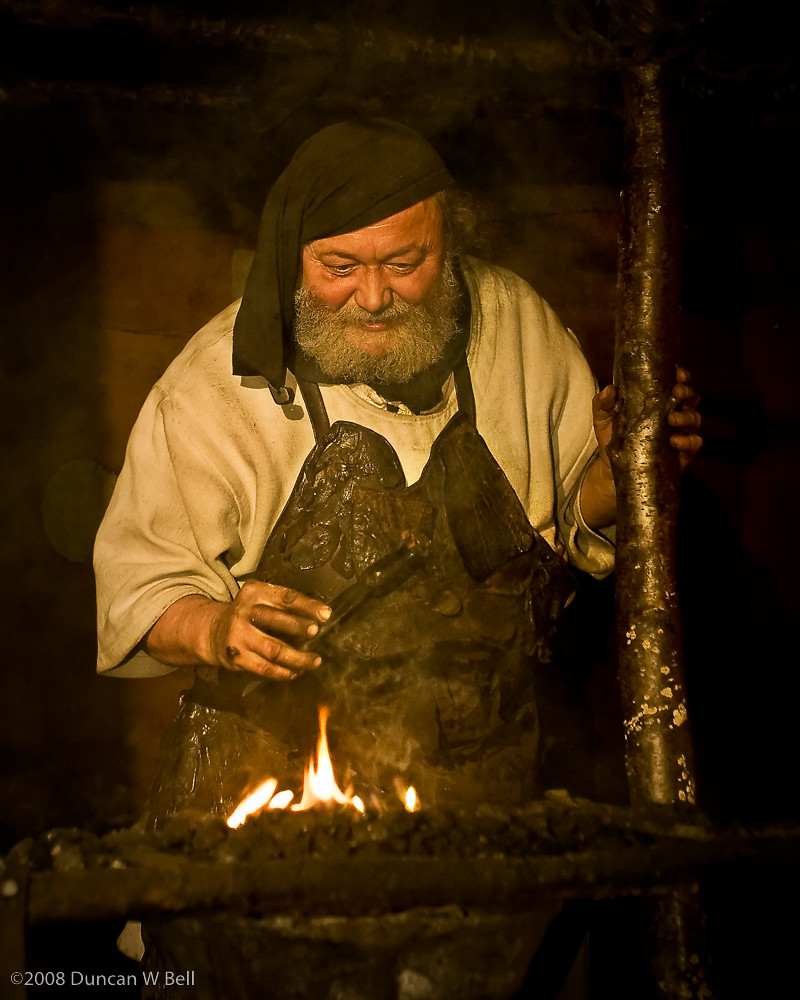
Medieval Blacksmith a photo on Flickriver
Blacksmiths living in cities during the middle ages worked under the authority of local guilds, which were founded sometime during the 12th century. These medieval organizations brought together working-class people like merchants, artisans, and craftsmen and operated as a combination of a trade union and vocational school.
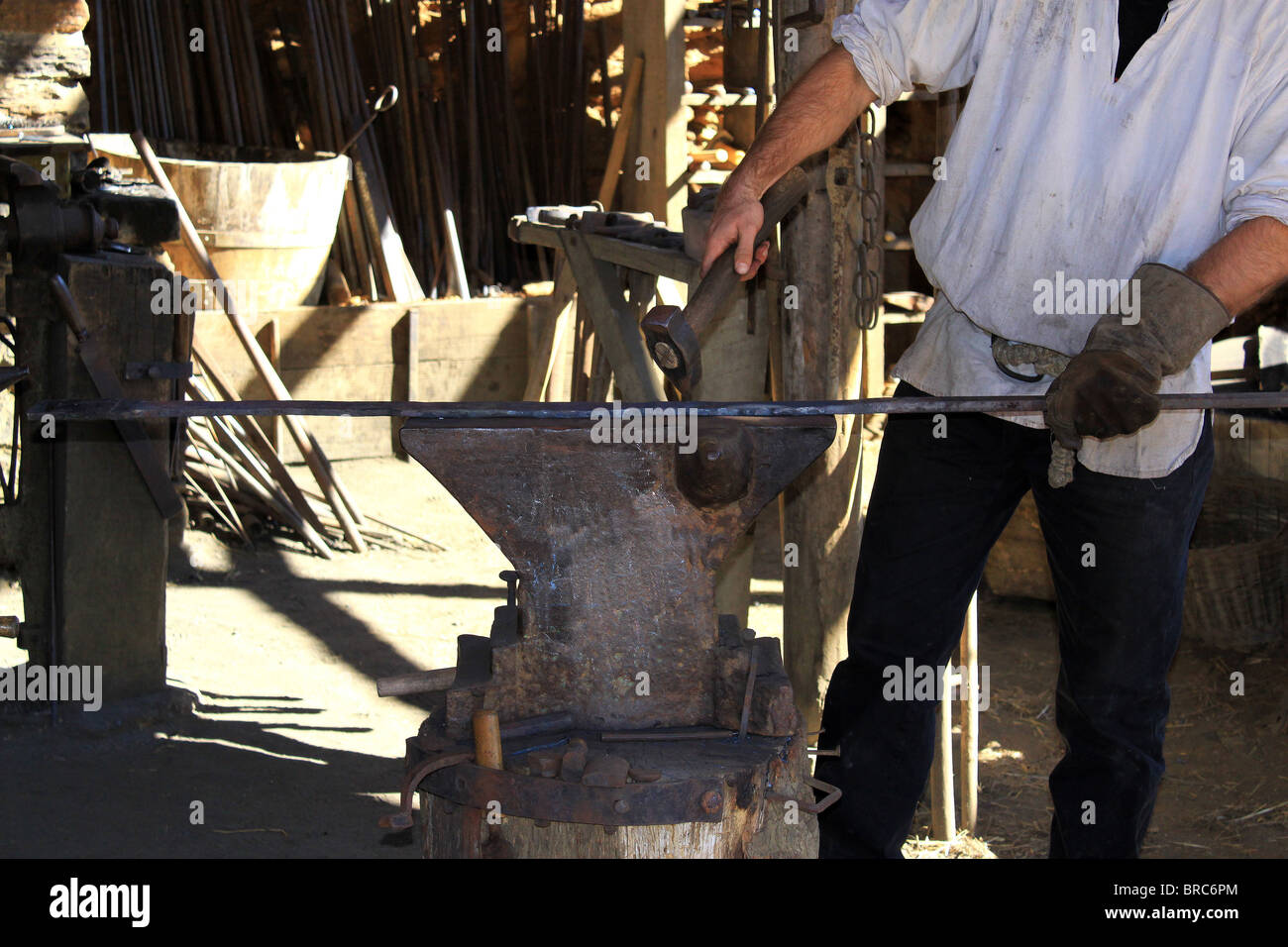
an artisan blacksmith in his in the Middle Ages Stock Photo Alamy
Introduction The Iron Age: The Dawn of Blacksmithing The Middle Ages: The Golden Age of Blacksmithing The Industrial Revolution: The Transformation of Blacksmithing Introduction Blacksmithing, the age-old craft of shaping iron and steel, has played a pivotal role in shaping our world.
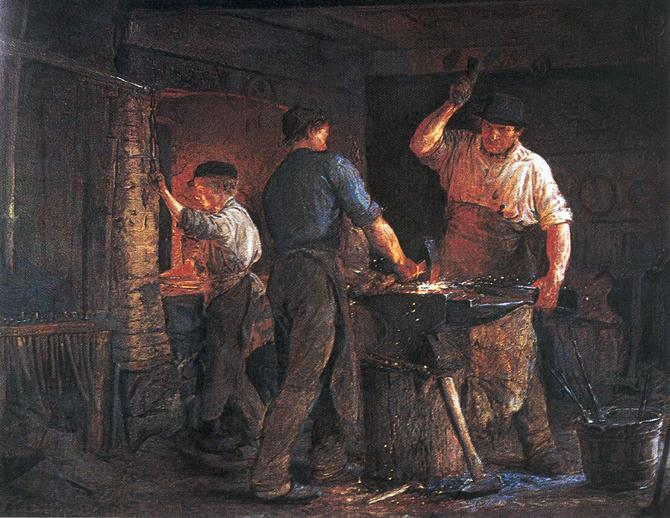
Medieval Blacksmiths at emaze Presentation
Medieval Baker & Apprentice Unknown Artist (Public Domain) Medieval Trades were essential to the daily welfare of the community and those who learned a skill through apprenticeship could make a higher and more regular income than farmers or soldiers.

Image result for medieval blacksmith painting
Medieval Life Explore by Location Medieval Blacksmith Blacksmiths were a staple of every medieval town. They created objects from wrought iron or steel by forging the metal with tools to hammer, bend, cut, and produce objects such as weapons and utensils.

medieval blacksmith a photo on Flickriver
The Craftsmanship of Ancient Forges Before the rise of medieval blacksmithing, the ancient world saw the emergence and growth of blacksmithing in several civilizations. In Ancient Egypt, for instance, blacksmiths played a vital role in creating tools for construction and agricultural equipment, which enabled their civilization to flourish.

Medieval Blacksmith Daily Life (Guilds, Work & Training) Working the Flame
The primary tools of a blacksmith medieval were simple yet powerful: the hammer, the anvil, and the forge. With a hammer in hand, they would shape and mold metal to their will. The anvil provided a sturdy, unyielding surface upon which the metal was formed, while the forge served as the fiery heart of the blacksmith's workshop.
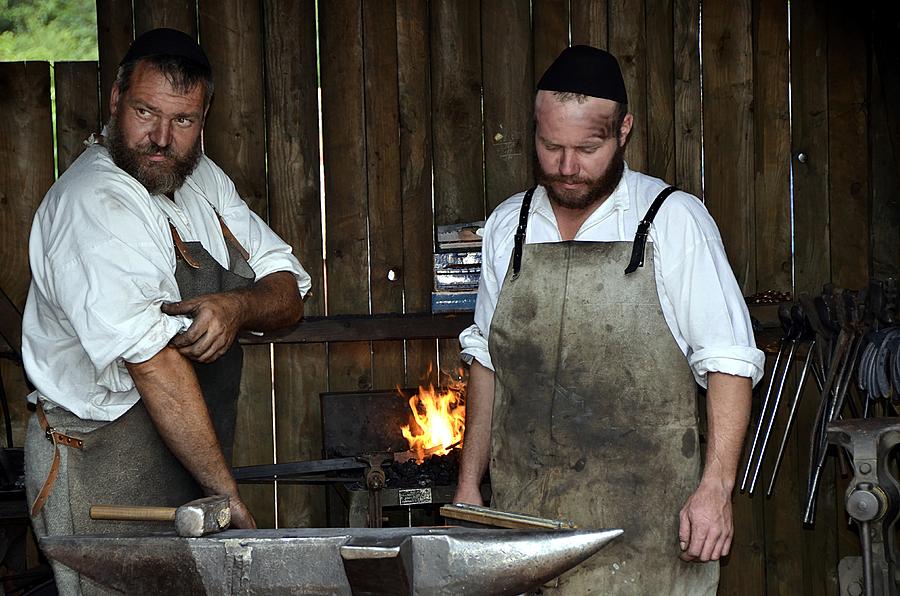
The Medieval Blacksmith In Bavaria Photograph by Elzbieta Fazel
Medieval Blacksmith. Blacksmiths had central importance in cities, towns, and villages of medieval times. Almost every village had its own forge or smithy where the tools required in construction such as nails, and doorknobs were made in addition to weapons such as swords and amours. The fuel used in the smithy was charcoal and intense heating.

Medieval Monday Blacksmiths Allison D. Reid
The medieval blacksmith and his products. By Ian H. Goodall. Medieval Industry, edited by D.W. Crossley (London: Council for British Archaeology, 1981). Introduction: The medieval blacksmith produced the many tools and fittings used in everyday life, as well as more specialized items such as church doors and screens, weapons, and armour.